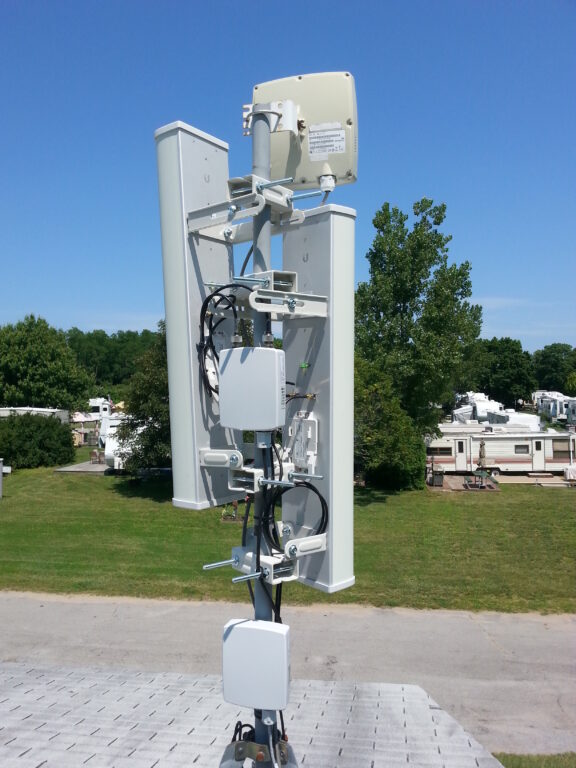Got Wi-Fi?
| | The latest trend in Wi-Fi is the adoption of Wi-Fi 6E, which is an extension of Wi-Fi 6. Wi-Fi 6E operates on the 6 GHz frequency band, which is newly available for Wi-Fi use.This additional frequency band provides more spectrum, less interference, and faster speeds, which can lead to better performance, higher capacity, and improved user experience. Other trends in Wi-Fi include the use of mesh networks, which allow for better coverage and connectivity in large areas or buildings, and the integration of artificial intelligence and machine learning algorithms to optimize network performance and troubleshoot issues. Additionally, there is increasing focus on Wi-Fi security and privacy, with the adoption of stronger encryption standards and the development of new security protocols to protect against threats such as hacking and data breaches. |
WiFi has become an integral part of our daily lives, enabling us to stay connected with the world and stream our favorite content from anywhere in our homes. However, a poorly set-up WiFi network can lead to slow speeds, connectivity issues, and security vulnerabilities. In this blog post, we’ll share the ultimate guide to setting up a fast and secure WiFi network for your home or office.
Section 1:
Choose the right equipment The first step to setting up a fast and secure WiFi network is to choose the right equipment. This includes a high-speed router, compatible with the latest WiFi standards, such as WiFi 6, and a modem that supports your internet service provider’s (ISP) speeds. Make sure to choose a router with enough coverage for your home or office and sufficient ports for wired devices.
Section 2:
Optimize router placement Router placement is critical for ensuring optimal WiFi coverage and speeds. Place your router in a central location, away from walls and obstructions, and elevate it to increase coverage. Avoid placing it near other electronic devices that may interfere with the signal, such as microwaves and cordless phones.
Section 3:
Secure your WiFi network Securing your WiFi network is crucial to prevent unauthorized access and protect your sensitive data. Change the default network name (SSID) and password to a unique and strong combination of characters. Enable WPA2 or WPA3 encryption, and disable WPS (WiFi Protected Setup) to prevent brute-force attacks.
Section 4:
Update firmware and settings Regularly updating your router’s firmware and settings can improve performance and fix security vulnerabilities. Check your router manufacturer’s website for updates and install them promptly. Also, adjust your router’s settings, such as channel selection, to reduce interference and optimize speeds.
Section 5:
Manage network traffic Managing your network traffic can help prioritize bandwidth-intensive applications, such as video streaming and online gaming. Use Quality of Service (QoS) settings to allocate bandwidth to specific devices or applications. Also, limit the number of devices connected to your network to prevent congestion and slow speeds.
-
Prioritize traffic: Identify which applications or services are most important to your network and give them the highest priority. This can be done using Quality of Service (QoS) mechanisms.
-
Monitor network traffic: Use network monitoring tools to keep track of the traffic on your network. This will help you identify any bottlenecks or congestion points and take corrective action.
-
Implement traffic shaping: Traffic shaping can help you control the flow of traffic on your network by setting limits on how much bandwidth each application or user can use.
-
Use load balancing: Load balancing can distribute network traffic across multiple servers, which can help to reduce congestion and improve performance.
-
Optimize network performance: Make sure that your network is optimized for performance by using the latest hardware and software, and by regularly tuning and updating your network configurations.
-
Secure your network: Implement appropriate security measures to protect your network from threats such as viruses, malware, and unauthorized access. This can help to prevent network congestion caused by malicious traffic.
Overall, managing network traffic requires a combination of careful planning, monitoring, and optimization to ensure that your network is performing at its best while also providing a secure environment for your users.
Setting up a fast and secure WiFi network requires careful consideration of equipment, placement, security, updates, and traffic management. By following the tips and best practices outlined in this guide, you can ensure optimal performance and protect your privacy and data from potential threats.
For more information on setting up your new or existing Wi-Fi network, contact GNS WIRELESS today!

